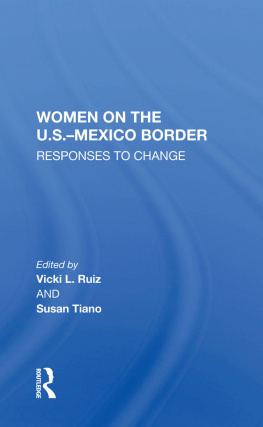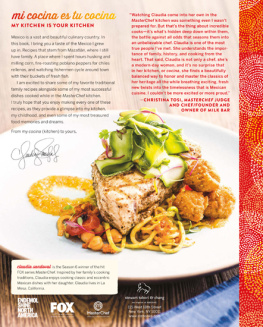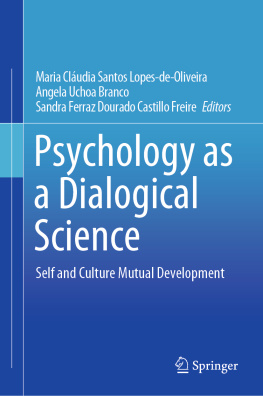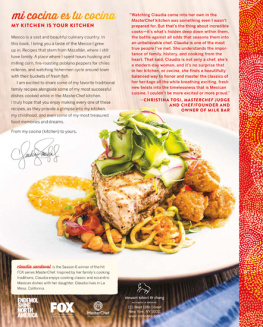Louann Atkins Temple Women & Culture Series
UNDOCUMENTED MOTHERHOOD
Conversations on Love, Trauma, and Border Crossing
Elizabeth Farfn-Santos

University of Texas Press
Austin
The Louann Atkins Temple Women & Culture Series is supported by Allison, Doug, Taylor, and Andy Bacon; Margaret, Lawrence, Will, John, and Annie Temple; Larry Temple; the Temple-Inland Foundation; and the National Endowment for the Humanities.
Copyright 2022 by the University of Texas Press
All rights reserved
First edition, 2022
Requests for permission to reproduce material from this work should be sent to:
Permissions
University of Texas Press
P.O. Box 7819
Austin, TX 78713-7819
utpress.utexas.edu/rp-form
Library of Congress Cataloging-in-Publication Data
Names: Farfan-Santos, Elizabeth, author.
Title: Undocumented motherhood : conversations on love, trauma, and border crossing / Elizabeth Farfan-Santos.
Other titles: Louann Atkins Temple women & culture series.
Description: First edition. | Austin : University of Texas Press, 2022. | Series: Louann Atkins Temple women & culture series | Includes bibliographical references.
Identifiers: LCCN 2022002731 ISBN 978-1-4773-2612-1 (cloth) ISBN 978-1-4773-2613-8 (paperback) ISBN 978-1-4773-2614-5 (PDF) ISBN 978-1-4773-2615-2 (ePub)
Subjects: LCSH: Farfan-Santos, ElizabethFamily. | Women noncitizensUnited StatesBiography. | Women noncitizensUnited StatesInterviews. | Women noncitizensUnited StatesSocial conditions. | NoncitizensMedical careUnited States. | Women immigrantsUnited StatesSocial conditions. | Women immigrantsMedical careUnited States. | MexicansUnited StatesSocial conditions. | Human smugglingMexican-American Border Region.
Classification: LCC JV6602 .F37 2022 | DDC 304.8/730082dc23/eng/20220518
LC record available at https://lccn.loc.gov/2022002731
doi:10.7560/326121
Para Claudia Garca y todas las mams indocumentadas
Sus vidas son mucho ms que papeles.
En memoria de mi abuelita, Mara Luisa Farfn (19372020)
Para mi mam, Elvia Farfn y para mi hija, Anahita Farfn-Santos
Tres generaciones de mujeres finding each other anew at the borderlands of motherhood.
CONTENTS
AUTHORS NOTES
A Note on Research
This book was born out of several conversations with Claudia Garca and my mother; however, it is also a culmination of three years of fieldwork, between 2014 and 2017, with undocumented mothers in their relationship to the public health care system in Texas and more than seven years of research on undocumented immigrant marginalization and alienation within the public health care system in the United States. Some parts of this book were introduced in lesser detail in 2019 in two scholarly papers, The Politics of Resilience and Resistance: Health Care Access and Undocumented Mexican Motherhood in the United States in Latino Studies and Undocumented Motherhood: Gender, Maternal Identity, and the Politics of Health Care in Medical Anthropology: Cross-Cultural Studies in Health and Illness. Except for my own family memories, I have changed all names and personal details.
No person in this book is complete. It was impossible to include all the hours of conversation that Claudia and I shared in this one book. Some stories just didnt fit, and others were intentionally left out, either at Claudias request or because I felt the story revealed information that could put Claudia and her family at risk. Not everything has to be written and published. Nevertheless, there is life lived in the blank spaces between words and punctuation.
A Note on Images
The sketches throughout the book are blind contour drawings I drew of Claudia, her daughters, and her comadres using photographs. Blind contour drawings are studies. They involve drawing an image by carefully observing a subject without ever looking down at the page. I include these drawings because they are a visual representation of the broader objective of this book. The blind contour drawing requires a dedicated and intentional focus on a single subjectas did this book. In producing the drawing, the artist carefully attempts to capture the subject exactly as they are, and yet what emerges is as imperfect and complex as the subjects own story. No matter how hard and how carefully the artist observes the subject, they will never be able to fully capture them as they truly are. Blind contour drawings of human subjects mimic the fluid and constantly shifting reality of human life and human perspective. Every drawing, like every story, is different every timesubject and author united in perpetual motion and change.
UNDOCUMENTED MOMENTS
AFTER SEVERAL WEEKS WAITING IN TWO DIFFERENT HOST homes in the Rio Grande Valley, Claudias coyote informed her that it was time for her daughter to leave. Nati would be traveling to Houston, Texas, without her mother, in a car with other children and a woman she had never met. Nos dijeron que siempre estaramos juntas, Claudia cried, y no fue as... No fue as. In 2013 Claudia Garca and her then-two-year-old daughter, Natalia (Nati), left their small town in a region near San Luis Potos, Mexico, to join Claudias husband in Houston. Claudia had made the decision to cross the border because Nati was born with a hearing impairment, and she hoped that in the United States her daughter would have a chance at a better life.
I met Claudia at the Southeast Community Health Center in 2015. We met a couple of times at the clinic in the beginning, before Claudia welcomed me into her home. I remember thinking her energy was captivating. She felt young and light-spirited. Claudia was in her thirties, so she was, in fact, young, but it was more than that. Talking with her was easy from the very beginning, like we had known each other for years already. She opened up to me in a way that others didnt; she wanted me to know all of the layers of her experience, and many of those layers were wounds that were still very raw. My grandmother wouldve called Claudia ligera. Claudia felt light, but I wouldnt think much about it until after I had heard her story and seen her wounds.
Through our conversations together, Claudia and I discovered that our children went to the same school. Later, they even came to share the same classroom. It wasnt a huge coincidence since the clinic where we met was in the same neighborhood as the school, and both had been part of that community for generations. When I met them, Claudia and her husband had two daughters: Nati, who was born in Mexico and takes center stage in this book, and Jackie, who was born in the United States and was just a toddler at the time. Most of our conversations took place in Claudias living room. Wed drive over to her home after dropping our kids off at school, and there we would sit on her couchremembering.
While Jackie napped in the other room, the early morning light still dim in the house, Claudias most enduring memories unfolded for me over a series of episodes that, like the scenes of a captivating novela, sent me on a daily rollercoaster of emotions, awe, and disbelief. Growing up, I simultaneously loved and disliked Mexican novelas. The extreme suffering that Mexican women endure in novelas was often too much for my thirteen-year-old heart to bear. I longed for the main character to catch a break that never seemed to come soon enoughat least not until she had first been put through every trial and disaster imaginable. Every episode would ebb and flow as though resolution was just around the corner, almost there, but always just out of reach. My grandmother would laugh at my desperation and say, La emocin es el propsito, hija. El drama! The emotion is the point, she emphasized.



![Claudia Roden - Claudia Rodens Mediterranean: Treasured Recipes from a Lifetime of Travel [A Cookbook]](/uploads/posts/book/289768/thumbs/claudia-roden-claudia-roden-s-mediterranean.jpg)






